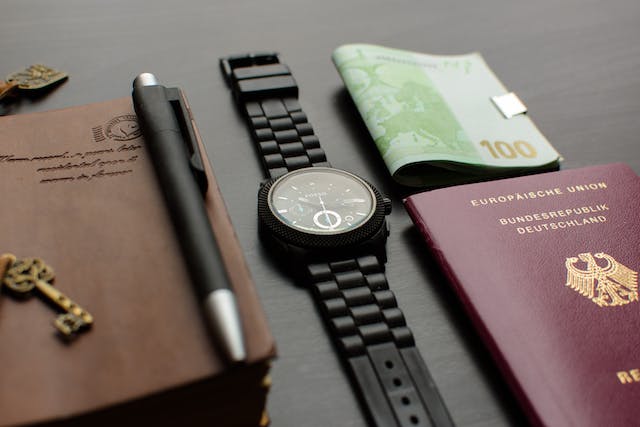
Studying abroad is a dream for many students who want to expand their horizons, experience new cultures, and gain valuable skills. However, before you can pack your bags and hop on a plane, you need to secure a student visa that allows you to enter and stay in your chosen country legally.
A student visa is a type of non-immigrant visa that permits you to study at an accredited institution in a foreign country for a specific period of time. The requirements, fees, and processing times for a student visa may vary depending on the country. Therefore, it is important to do your research and plan ahead to avoid any delays or complications.
In this article, I will guide you through the general steps of applying for a student visa to study abroad. I will also share some tips and tricks to make your application process smoother and more successful. Let’s get started!
Step 1: Choose your destination and program
The first step of applying for a student visa is to decide where and what you want to study abroad. There are many factors to consider when choosing your destination and program, such as:
- Your academic interests and goals
- Your budget and financial aid options
- Your language skills and preferences
- Your cultural compatibility and adaptability
- Your safety and security
You can use online resources, such as Bing or Studyportals, to search for and compare different programs and destinations. You can also consult with your academic advisor, study abroad office, or alumni network to get more information and advice.
Once you have narrowed down your options, you need to apply and get accepted to your chosen program. This may involve submitting your academic transcripts, test scores, letters of recommendation, personal statement, and other documents. Make sure you follow the application instructions carefully and meet the deadlines.
Step 2: Check the visa requirements and eligibility
After you have received your acceptance letter from your program, you need to check the visa requirements and eligibility for your destination country. You can find this information on the official website of the embassy or consulate of that country in your home country. Alternatively, you can use online tools, such as VisaHQ or iVisa, to check the visa requirements and apply online.
Some of the common visa requirements and eligibility criteria are:
- A valid passport with at least six months of validity and two blank pages
- A letter of acceptance from your program or institution
- A proof of financial means to cover your tuition, living expenses, and return travel
- A proof of health insurance and medical examination
- A proof of academic qualifications and English proficiency
- A proof of no criminal record and good character
- A proof of intent to return to your home country after your studies
- A visa application form and fee
Some countries may have additional or specific requirements, such as:
- A letter of sponsorship or invitation from a relative, friend, or organization in the destination country
- A pre-visa interview or biometric data collection at the embassy or consulate
- A pre-approval or confirmation letter from the immigration authorities of the destination country
- A minimum or maximum age limit for applicants
- A restriction on working or traveling while on a student visa
Make sure you check the visa requirements and eligibility for your destination country thoroughly and prepare all the necessary documents and evidence. If you have any questions or doubts, you can contact the embassy or consulate of that country or seek professional help from a visa agent or consultant.
Step 3: Apply for your student visa
The next step is to apply for your student visa. Depending on the country, you may be able to apply online, by mail, or in person. You should apply as soon as possible, as the visa processing times may vary from a few days to several weeks or months. You should also keep in mind the start date of your program and plan your travel accordingly.
To apply for your student visa, you need to:
- Fill out the visa application form with accurate and complete information
- Pay the visa application fee, which may be non-refundable and non-transferable
- Submit your visa application and supporting documents to the embassy or consulate of your destination country or the online portal
- Track your visa application status and wait for the decision
- Collect your visa and passport from the embassy or consulate or the delivery service
Some tips and tricks to improve your chances of getting your student visa are:
- Apply early and avoid peak seasons
- Follow the visa application instructions and checklist carefully
- Provide clear and consistent information and documents
- Be honest and truthful in your application and interview
- Show your genuine interest and motivation to study abroad
- Demonstrate your financial stability and academic potential
- Explain your ties and plans to return to your home country
Step 4: Prepare for your departure and arrival
Congratulations! You have successfully obtained your student visa and are ready to embark on your study abroad adventure. However, before you leave, there are some things you need to do to prepare for your departure and arrival.
Some of the things you need to do before you depart are:
- Book your flight tickets and accommodation
- Pack your luggage and essential items, such as your passport, visa, acceptance letter, health insurance, medications, etc.
- Inform your family, friends, bank, and other relevant parties about your travel plans
- Exchange some money to the local currency of your destination country
- Learn some basic phrases and etiquette of the local language and culture
Some of the things you need to do after you arrive are:
- Register with your program or institution and attend the orientation sessions
- Activate your local phone number and internet access
- Open a local bank account and get a debit or credit card
- Apply for a local student ID card and transportation pass
- Explore your new surroundings and make new friends
Conclusion
Applying for a student visa to study abroad may seem daunting and complicated, but it is not impossible. By following the steps and tips in this article, you can make your visa application process smoother and more successful. Remember, studying abroad is a once-in-a-lifetime opportunity that can enrich your personal and professional development. So, don’t let the visa process stop you from pursuing your dreams. Go ahead and apply for your student visa today and get ready to experience the world! ?













Je veux juste arriver là et avoir une vie différente aide moi à y parvenir
Je comprends que vous souhaitiez arriver à un endroit différent dans la vie et y avoir une vie différente. Pour atteindre cet objectif, voici quelques conseils généraux qui pourraient vous aider :
1. Fixez des objectifs clairs : Définissez ce que signifie “avoir une vie différente” pour vous. Identifiez les aspects de votre vie que vous souhaitez changer et définissez des objectifs spécifiques à atteindre.
2. Établissez un plan d’action : Une fois que vous avez défini vos objectifs, élaborez un plan d’action détaillé pour les atteindre. Divisez ces objectifs en étapes plus petites et réalisables, puis créez un calendrier pour suivre votre progression.
3. Améliorez vos compétences : Identifiez les compétences dont vous avez besoin pour mener la vie que vous désirez et cherchez des moyens de les acquérir ou de les développer. Cela peut inclure la formation professionnelle, l’éducation ou le développement personnel.
4. Saisissez les opportunités : Soyez à l’affût des opportunités qui peuvent vous rapprocher de vos objectifs. Cela peut inclure des offres d’emploi intéressantes, des formations spécialisées ou même des bourses d’études qui correspondent à vos besoins.
5. Entourez-vous de personnes positives : Le soutien social est essentiel pour atteindre vos objectifs. Entourez-vous de personnes positives qui partagent vos aspirations et qui peuvent vous encourager tout au long du chemin.
6. Restez persévérant(e) : Le changement peut prendre du temps et il y aura probablement des obstacles sur votre chemin. Restez persévérant(e) et n’abandonnez pas face aux difficultés. Réévaluez régulièrement vos objectifs et ajustez votre plan d’action si nécessaire.
7. Prenez soin de vous : Pour pouvoir atteindre vos objectifs, il est essentiel de prendre soin de votre bien-être physique et mental. Assurez-vous de vous accorder du temps pour vous reposer, vous détendre et vous ressourcer.
En suivant ces conseils et en restant déterminé(e), vous pouvez progressivement arriver à l’endroit que vous souhaitez et vivre une vie différente. Bonne chance dans votre parcours !
I want to apply for a scholarship
To apply for a scholarship, follow these steps:
1. Research and identify scholarship opportunities: Explore scholarships that align with your interests, field of study, or qualification criteria. You can search for scholarships on various platforms, including online directories like https://www.pickascholarship.com.
2. Read eligibility requirements: Carefully review the eligibility criteria for each scholarship you are interested in. Make sure you meet all the requirements before proceeding with your application.
3. Gather necessary documents: Collect all the required documents such as academic transcripts, recommendation letters, personal statements, essays, and any other supporting materials specified by the scholarship provider.
4. Prepare your application: Take time to craft a compelling application that highlights your achievements, goals, and why you deserve the scholarship. Tailor your application to meet each scholarship’s specific requirements.
5. Write a strong personal statement: Craft an engaging personal statement that showcases your strengths and explains why you are an ideal candidate for the scholarship. Be authentic and highlight any relevant experiences or challenges you have overcome.
6. Request recommendation letters: Reach out to professors, teachers, employers, or mentors who can provide recommendation letters on your behalf. Give them sufficient time to complete their letters.
7. Proofread and edit: Before submitting your application, carefully proofread it to ensure there are no grammatical errors or typos. Ask someone else to review it as well for a fresh perspective.
8. Submit the application: Follow the instructions provided by the scholarship provider on how to submit your application. Pay attention to deadlines and make sure to submit everything before the due date.
9. Follow up if necessary: After submitting your application, consider sending a thank-you email or letter to express gratitude for considering your application. If there is no specified timeline for results announcements, politely inquire about their decision timeline if necessary.
Remember that applying for scholarships is a competitive process; therefore, it’s essential to put in effort and dedication while preparing your application.